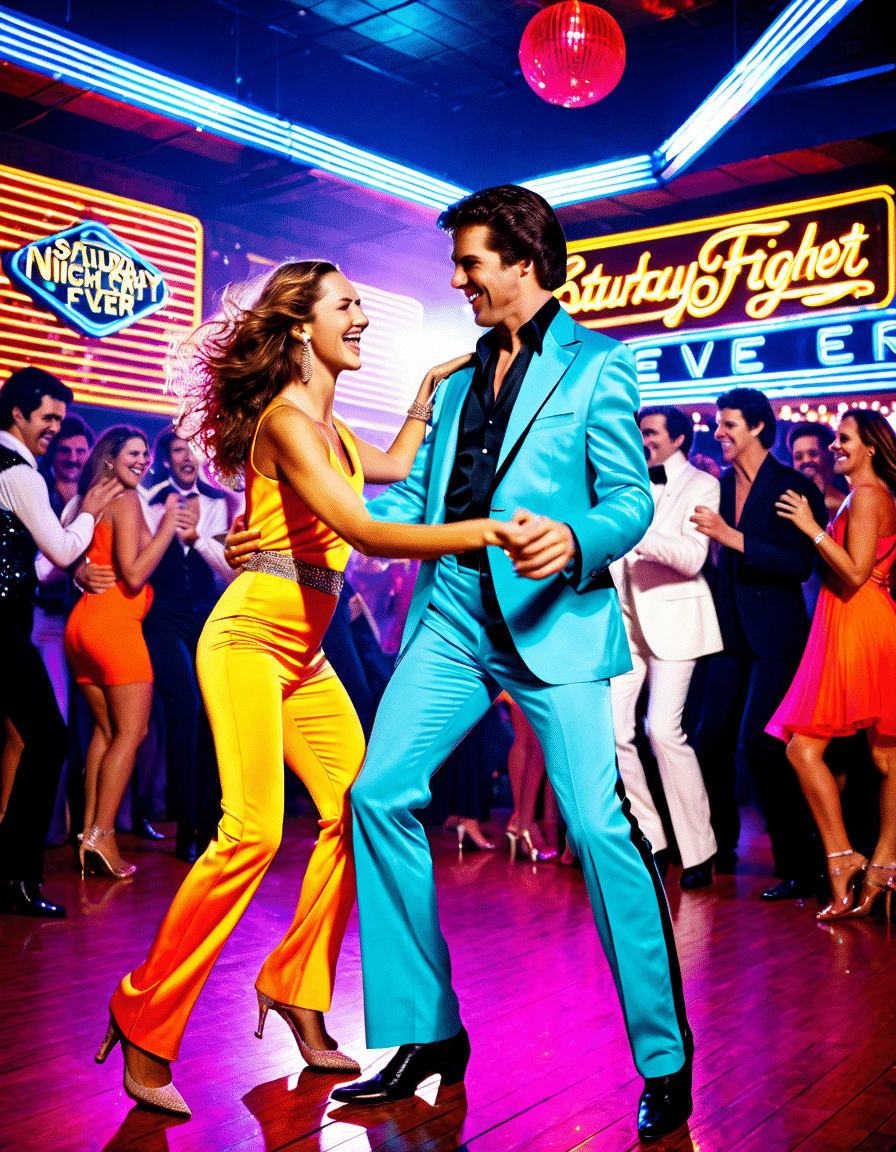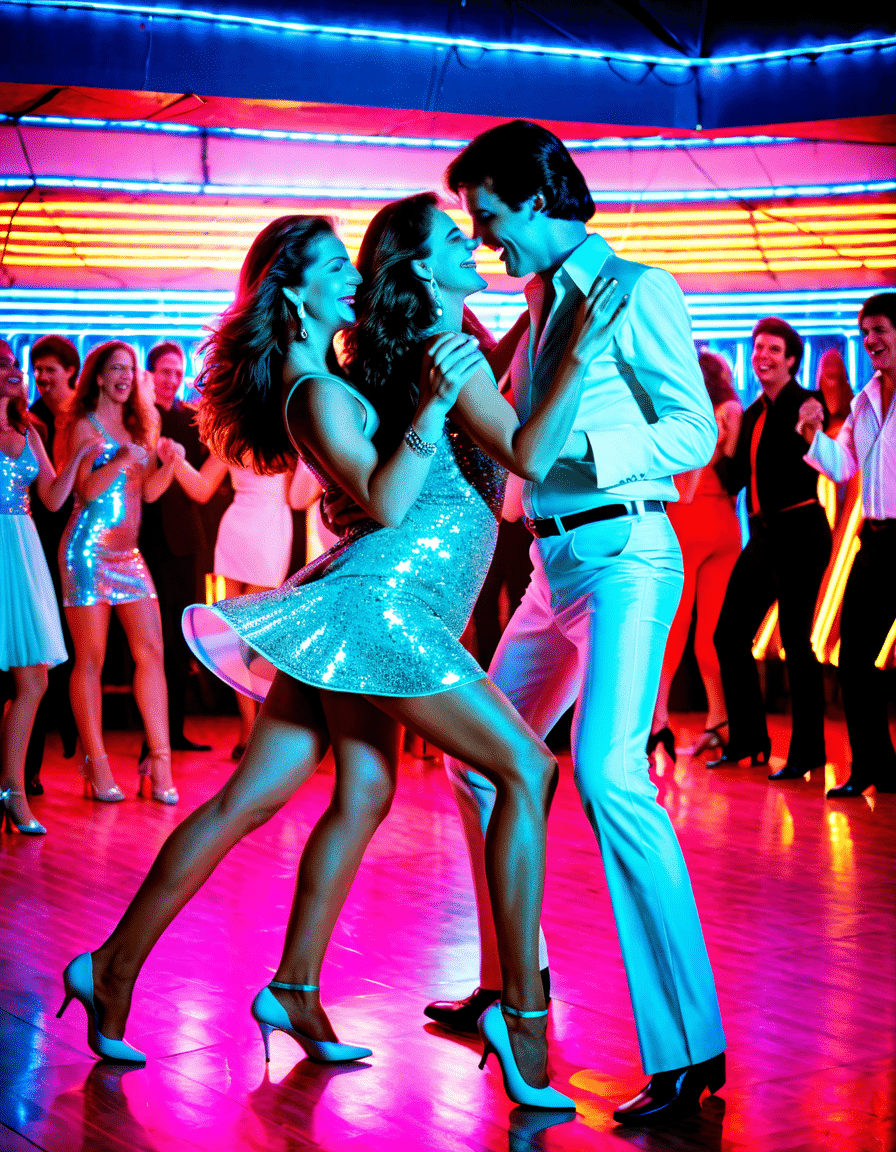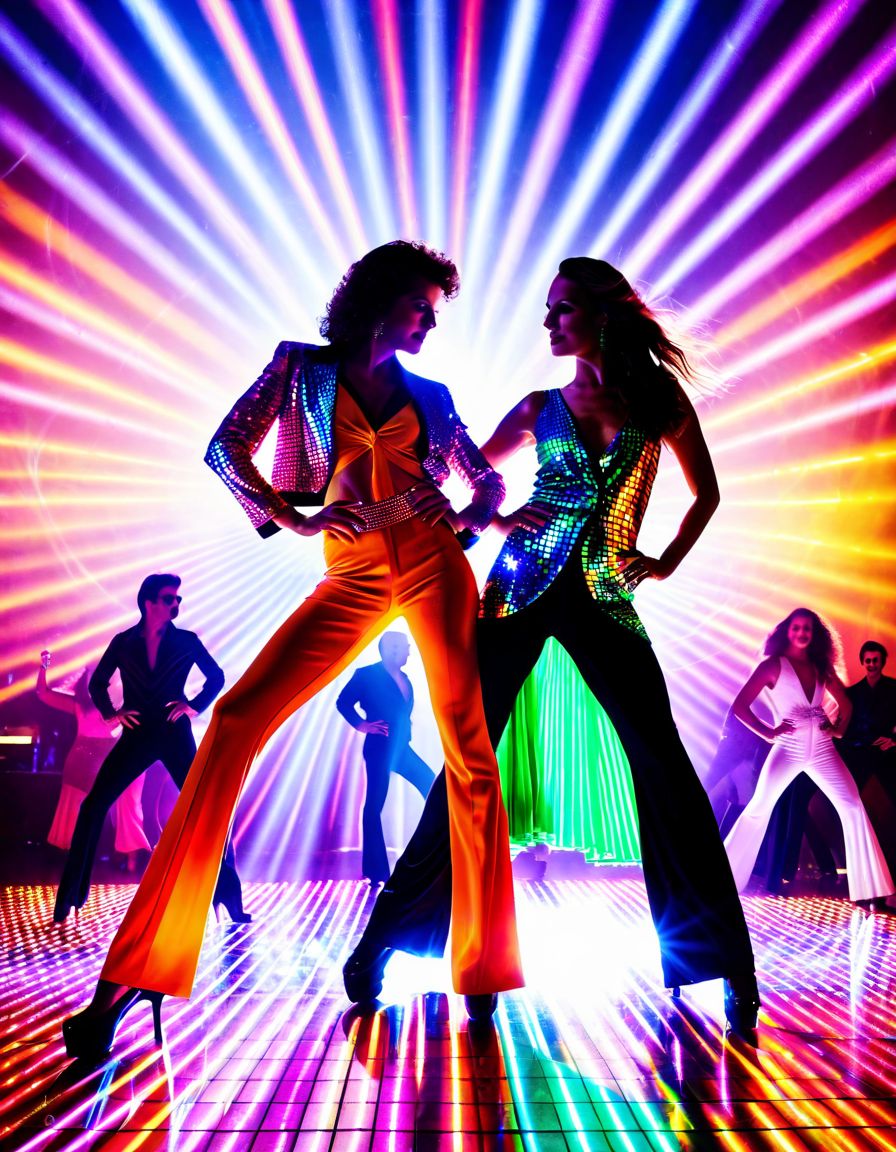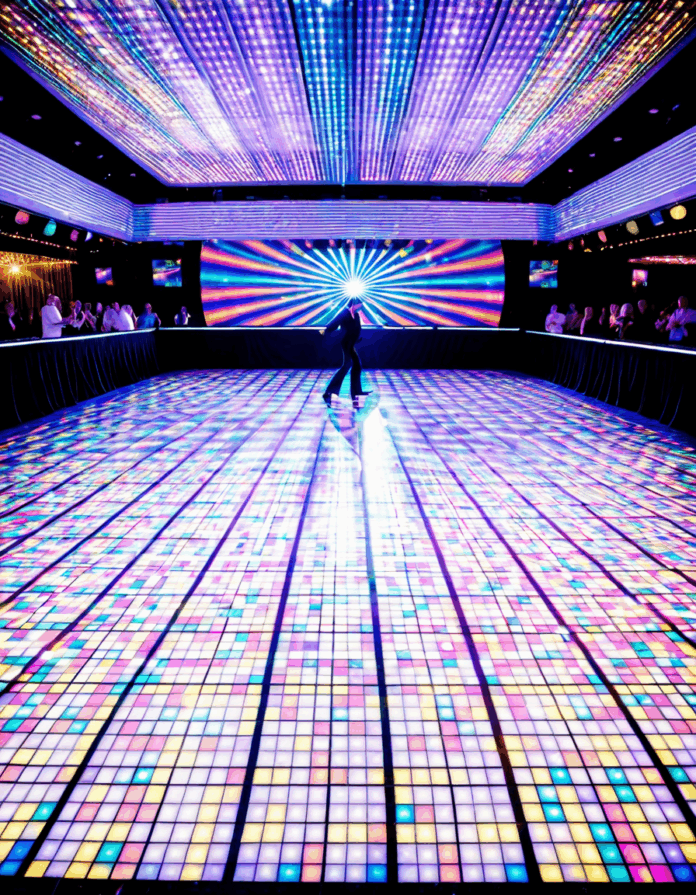The release of Saturday Night Fever in 1977 marks a pivotal moment not just in film, but in the evolution of dance and music, embedding disco into the very fabric of American culture. As the world watched Tony Manero, played by John Travolta, strut his stuff at Brooklyn’s legendary dance clubs, a multifaceted cultural phenomenon began to unfold. Saturday Night Fever didn’t just popularize the disco dance craze; it elevated the Bee Gees to global superstardom with a soundtrack that became one of the best-selling albums of all time. This film resonated deeply across diverse demographics, paving the way for a new avenue of community and self-expression that profoundly impacted various dance styles and genres for decades.

The Legacy of Saturday Night Fever on Dance and Music Culture
Saturday Night Fever challenged the norm, showcasing dance as an essential aspect of youth culture. The film bore witness to the late 1970s’ social dynamics, where disco dance floors morphed into vibrant social hubs. Patrons bonded over infectious rhythms and shared experiences, capturing the essence of freedom and self-expression. Places like Studio 54 in New York City blossomed as epicenters of cultural and musical exploration, setting a precedent for generations of nightclubs that followed.
Simultaneously, the impact on music was monumental. Prior to the film, rock and pop dominated the airwaves. With the entrance of disco, artists began to recognize the dance genre’s commercial viability. The Bee Gees, who provided the cinematic score, saw their songs like “Stayin’ Alive” become anthems of empowerment and resilience. Their influences stretch far beyond just the film, reaching into today’s music landscape where rhythmic sounds and upbeat melodies reign supreme.
The cultural ethos Saturday Night Fever embodied highlighted essential social issues of the era, such as class disparities and the pursuit of the American Dream. This narrative provided a stark contrast to the glamor of disco, revealing the underlying struggles of those yearning for something greater. Its release set in motion a cultural conversation that would resonate for decades, paving the way for future storytelling in films reflecting the multifaceted human experience.

Top 5 Ways Saturday Night Fever Redefined Movement and Style
The Enduring Influence of Saturday Night Fever in Contemporary Media
Today, Saturday Night Fever remains an undeniable touchstone in our cultural landscape. Its vibrant portrayal of 1970s nightlife has not only inspired remakes and parodies but has seeped into contemporary programming as well. Shows like “Stranger Things” and films like “Once Upon a Time in Hollywood” appeal to our nostalgia, often paying homage to the disco era that Saturday Night Fever so brilliantly encapsulated.
Choreography from the film often surfaces in dance films and televised competitions, showcasing how its influence permeates modern storytelling. Take, for example, the resurgence of iconic dance moves featured in various pop videos, remixing the classics while delivering a fresh spin. The interplay between nostalgia and modern interpretations emphasizes how Saturday Night Fever continues to shape contemporary culture.
Furthermore, the film’s music endures through myriad remixes, appealing to both older fans and new listeners. Artists tapping into the retro vibes introduce Saturday Night Fever to a new generation, ensuring its musical legacy lives on well into the future.
Analyzing the Societal Impact of Saturday Night Fever
The societal impact of Saturday Night Fever extends beyond its entertainment value. It vividly portrayed the struggles of young adults searching for purpose in an ever-shifting economic landscape. Its themes of aspiration, disenchantment, and communal connection resonate strongly with today’s youth. The film finds its parallel in modern platforms like TikTok, where dance trends serve as powerful modes of expression and connection among users, echoing the core narrative of Saturday Night Fever.
Interestingly, the exploration of identity and belonging features prominently in today’s conversations about youth culture. Themes from Saturday Night Fever still ring true as individuals strive for a sense of identity in an increasingly complex world. The film laid a foundation for conversations about self-discovery, continuity, and the power of music and dance as vehicles for expression.
Today’s youth reflect the struggles and aspirations highlighted in the film, making the cultural dialogue initiated by Saturday Night Fever even more relevant. As social media further intertwines with individual narratives, the film’s essence and themes continue to reflect lived experiences across generations.
The Pop Culture Revival: Saturday Night Fever in 2026
As we look to 2026, Saturday Night Fever remains a cultural icon. The persistence of remastered soundtracks and revival screenings keeps the film’s essence alive. Disco-themed events draw multicharismatic audiences, merging the nostalgic allure of the past with contemporary experiences.
The consistent resurgence of interest in vinyl records underscores an appreciation for past art forms that echoes the film’s musical legacy. The trend taps into the nostalgia for the analog age, echoing sentiments shared by fans of Saturday Night Fever and introducing new audiences to the mind-blowing resin that once defined disco.
In summary, the enduring relevance of Saturday Night Fever highlights its transformative power in shaping cultural identity. By continuously exploring its variety of influences, it’s clear that the film solidifies its place in cultural discussions, inspiring and invigorating new generations of artists and audiences alike. The world is a dance floor, and Saturday Night Fever stands as a testament to the transformative power of dance and music across generations.
Saturday Night Fever: A Cultural Shift in Dance
The Impact of Saturday Night Fever on Dance
When “Saturday Night Fever” hit theaters in 1977, it was like throwing a lit match into a fire—igniting disco culture across America. The film, centered around the life of Tony Manero, showcased the electrifying appeal of disco dance. Everyone wanted to bust a move just like John Travolta, sparking dance fever that reached far beyond the cinema. Fun fact: Even the stars of today look back at that time, and you might be surprised to find that actors like Josh Hutcherson have cited it as a source of inspiration in their own film careers, revealed in his Filmography.
The Music and Its Influence
The iconic Bee Gees soundtrack, including hits like “Stayin’ Alive,” helped solidify the film’s legacy. It’s hard to imagine the disco era without those catchy tunes. Though the vibrant culture thrived, it didn’t come without challenges. Just like the tales of athletes and coaches, like Rick Pitino, navigating their paths, the movie gave way to hard truths about the age group caught up in nightlife. It even raised questions about safety, paralleling discussions today about a brown recluse bite or other hazards lurking within seemingly fun environments. This dramatic blend of music, lifestyle, and consequences made “Saturday Night Fever” a cultural landmark that fans from different generations still appreciate.
Fashion and Dance Styles
And let’s not forget the fashion—a real spectacle! The polyester suits, bell-bottom pants, and shiny shoes became synonymous with disco dancing. The film inspired a whole lineup of styles that remained popular well into the ‘80s. Call it a fashion revolution! Interestingly, this collision of dance, emotion, and look is something filmmakers still reference today. Take, for instance, Niko Terho, a rising star that brings his charm to the screen in various projects, including dance-centric roles showcased on video platforms like this one.
So, whether you’re revisiting the movie or tuning in to the latest performances, you might catch a glimpse of history influencing today’s artists and events, much like Ll Cool J And others who shaped their careers in part due to films like “Saturday Night Fever” (check his story). The movie remains not just a nostalgic watch; it’s a lens through which we can see the evolution of dance and culture.




